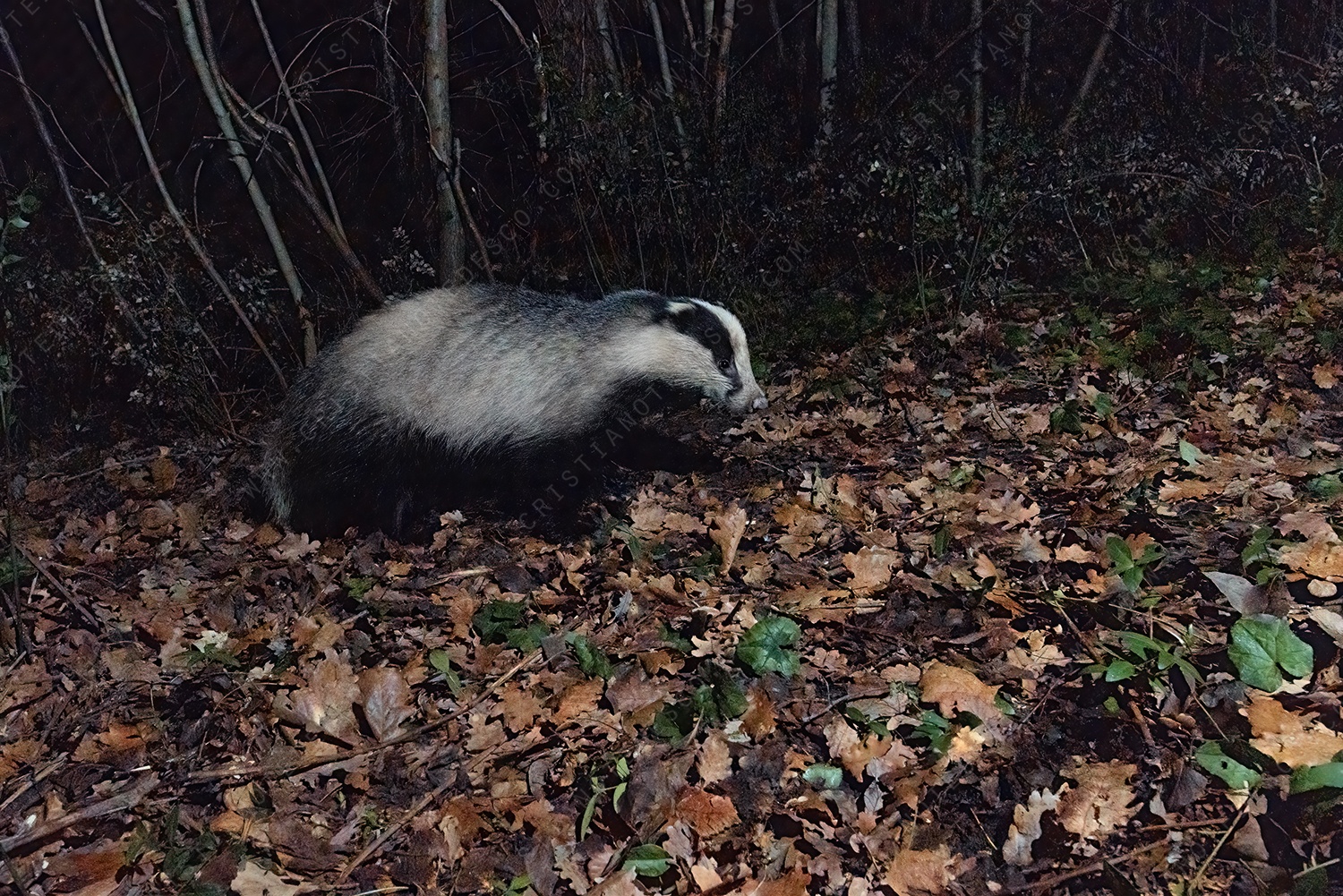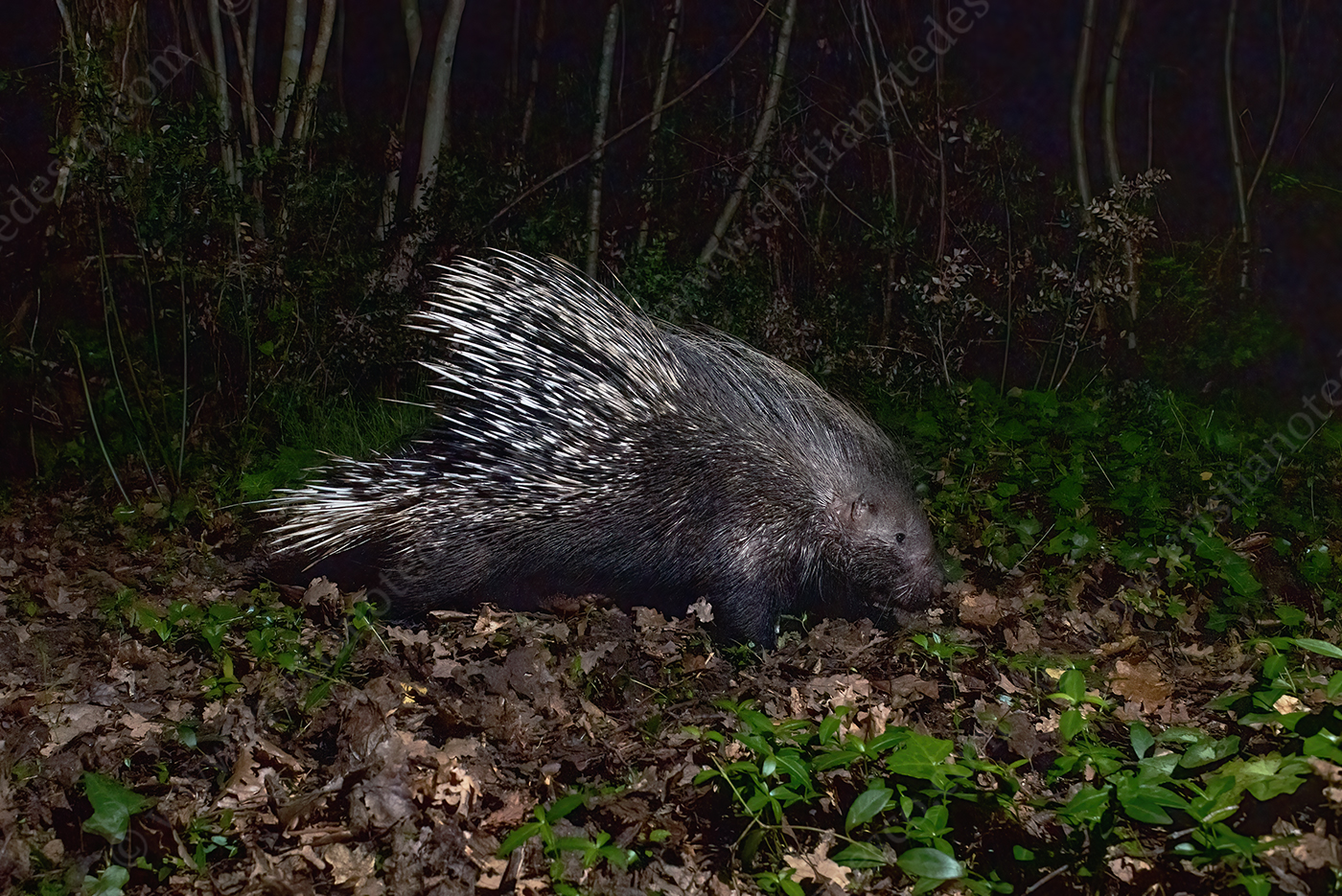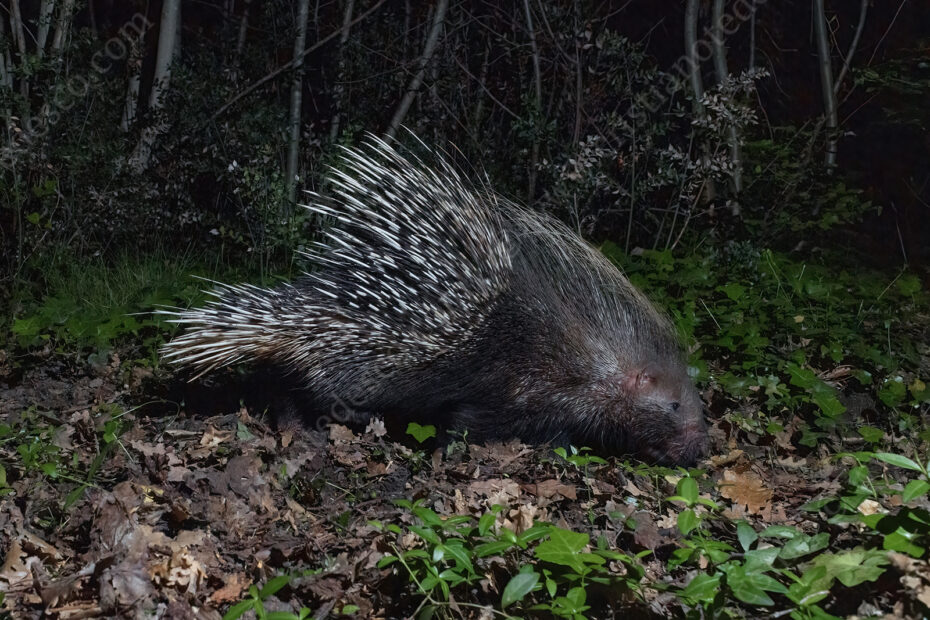Camera trapping is a type of approach to nature photography that has changed (for the umpteenth time) my way of thinking about contact with nature and with mammals in particular. I'm talking about contact even before photography.
Creatures of the night
It is a world that I approached by emulation, but I will tell this story another time. I thought back to the first two lines of an octave that I often read to my students: "Notte, che nel profondo oscuro seno / chiudesti e nell’oblio fatto sì grande" ... how many things has the night always hidden from men? certainly Tasso's song would have done justice to two of the most (un) fortunate lovers of sixteenth-century literature. But that's poetry. It is literature. It is not reality - and it could not be.

However, I should try to explain why it melts me, on certain days, placing my hands on the ground and feeling its warmth, even if the sky is gray and the horizon cold. Then I turn around and, from the sea that I sense beyond the furthest ridge, I feel a warmth and it wraps me around my back. Then the music of the stones, as I walk, and the creaking voice of the trees in the forest, merge. The apparent silence is extinguished. The senses sharpen. Now I can smell the smells. At times pungent. And I see. The traces appear suddenly. Clear. They sound like a call. We are here. Here we are. And you can't not see it, hear it, touch it that poetry . True and absolute, it has the flavor of life and not an aperitif.
I am not a nocturnal creature. I love the warm sun. I love the light. Yet the night attracts me. That of the woods, of nature. Perhaps this is also why the camera trapping immediately caught me. Because you can design, study and analyze during the day to spy on the night. Of course the challenge is very tough. Because you need discretion, attention to detail, patience, time and study. And the ability to foresee. And a bit of luck.
A porcupine quill, a beginning
So it went with porcupines, less well with badgers (but I'm working on it). It all started with a sting. Indeed from an inspection to try to understand. And a sting that appeared in the evening along a path leading out of a mixed grove of oaks, elms and ornellos. It was a late summer evening. Scrutinizing that path traced by foxes and badgers (at least I took those for sure) a sting appeared. Fortunately I was not alone, but with a companion of photographic and naturalistic adventures. Fortunately, I say, because otherwise I would have doubted my eyes. We looked at each other without saying anything for a few seconds. He had that sting in his fingers. We decided to place a camera trap and after a few days I called him to tell him that we had a porcupine video.
At that point the challenge had just begun. I remember well what he said to me: “If I were you I would put myself here day and night”. In a certain sense I did it, but not staying there flesh and blood ...
Camera trapping - the technical aspects
Inevitably, we end up bringing odors and foreign objects to that environment. And before they get used to it, it could take too long, if the initial reaction is disturbing. The rule is therefore to study the site and the movements of the fauna very well before even thinking about positioning the elements necessary for the shot . The rates I've been following for about a year still haven't digested my intrusions due to the flashes.
Inevitabilmente si finisce per portare odori e oggetti estranei a quell’ambiente. E prima che ci si abituino potrebbe volerci anche troppo tempo, se la reazione iniziale è di forte disturbo. La regola è quindi studiare molto bene il sito e i movimenti della fauna prima ancora di pensare a posizionare gli elementi necessari per lo scatto. I tassi che seguo da circa un anno ancora non hanno digerito le mie intrusioni a causa dei lampi flash.
Some subjects are more reactive in the face of novelty, others less ... but it is useless to think that they do not notice the changes to that environment. Changes that therefore must be minimized . After seeing one of the badgers that I follow, having marked the same butcher's broom repeatedly at each step, I decided not to touch even a blade of grass of the chosen site, and therefore to look for a positioning that would not cause any displacement or elimination of natural elements (dead wood, foliage, stones).
And the emotion?
I've been beating my head over all sorts of problems for months. I even thought a few times that I had embarked on a too difficult and energy-consuming undertaking early on. Monitoring the rates gave me many emotions, such as seeing the first one of this year's newborn babies appear outside the den: two fluffy badger puppies. Many photographic attempts. Many mistakes. Few photos.
Last week I went up to the woods to double check. Finally in the frame I see a rate! I only had a few shots in several months. Having three almost at full frame ... euphoric zoom on the reflex monitor and find that the photo is not in focus! in the reset of the previous weeks I had had a water infiltration problem. I had to re-dry the reflex and in this procedure I must have reset the MAF settings, so when the rate passed the lens had tried to fire ... a real disaster!
I had almost decided to give up and move everything to another place. But I liked that too much ... Long breath and I rearranged everything for the umpteenth time. I'll be back after 7 days. I open the sealed cassette, switch to play of the reflex… there are 30 new shots! WOW! The rate will be revised ... this time it will have worked!
No… it wasn't the badger.
After six months porcupines reappeared .
Due esemplari.
Heartbeat a thousand. In the first shots the subject was not whole. Thumb on the reflex menu to scroll the view. I think I stopped breathing until the first full porcupine. Silhouette. Perfectly in focus. In the center of the frame. With good lighting. These are those moments that repay you for days of doubts and uncertainties. But above all that they give you that emotion you will never forget .

It starts from here
In the meantime I have received other reports of porcupines in my area ... the journey is, as usual, only at the beginning.

